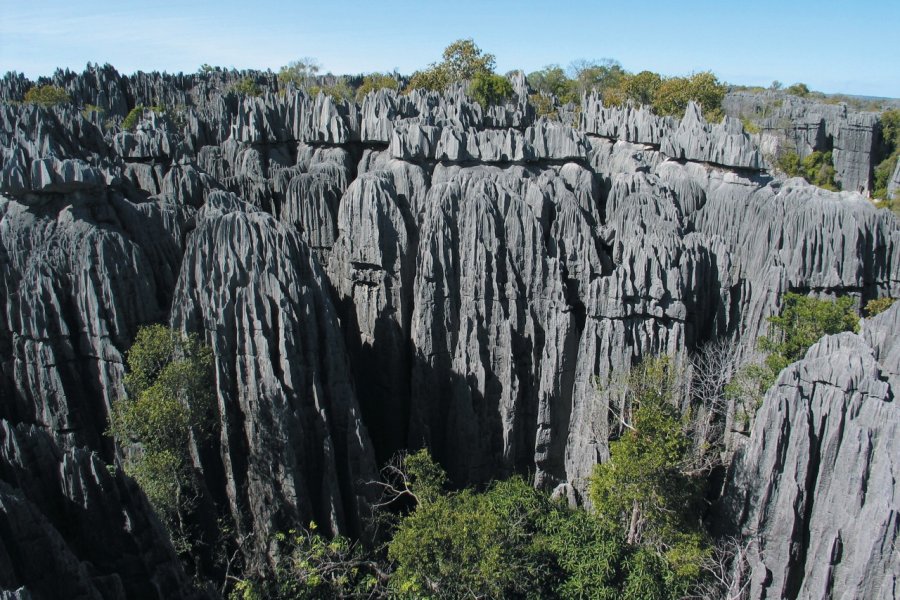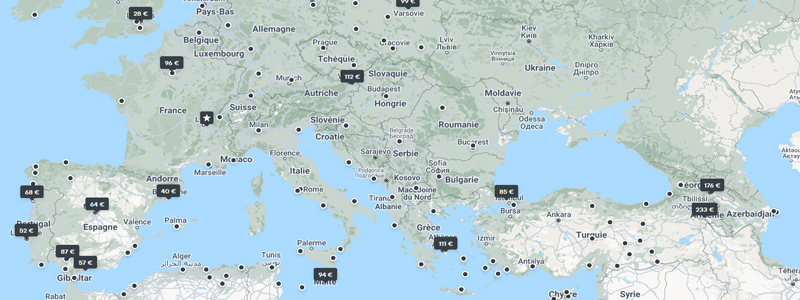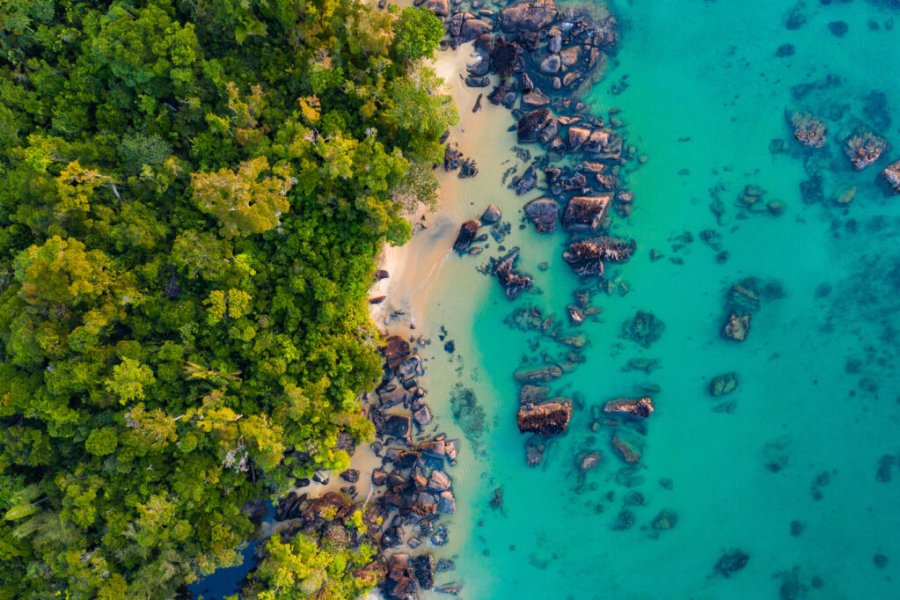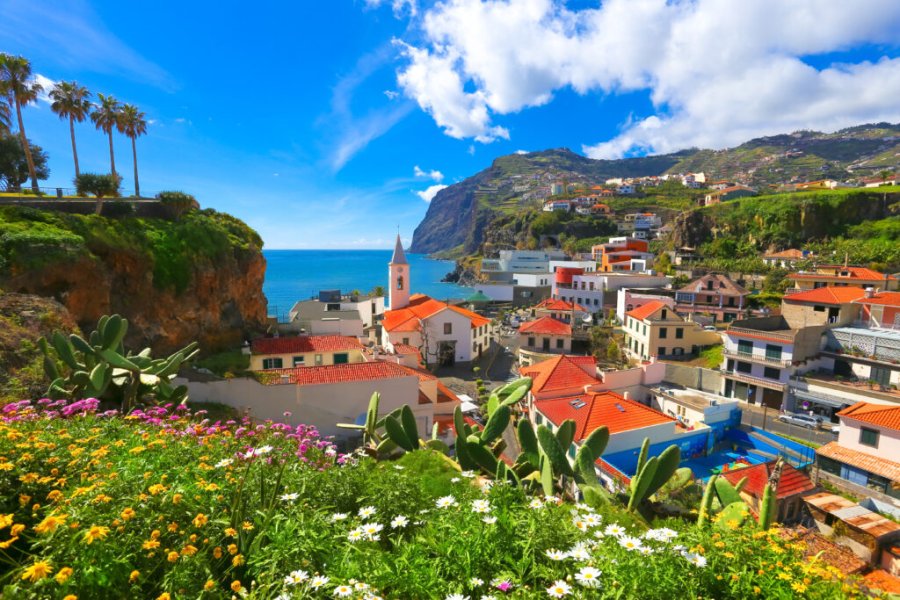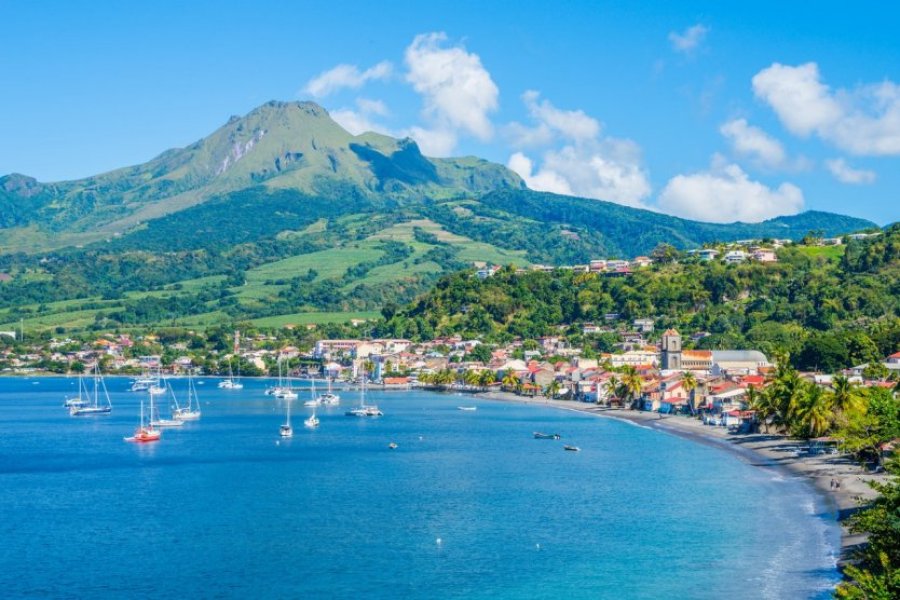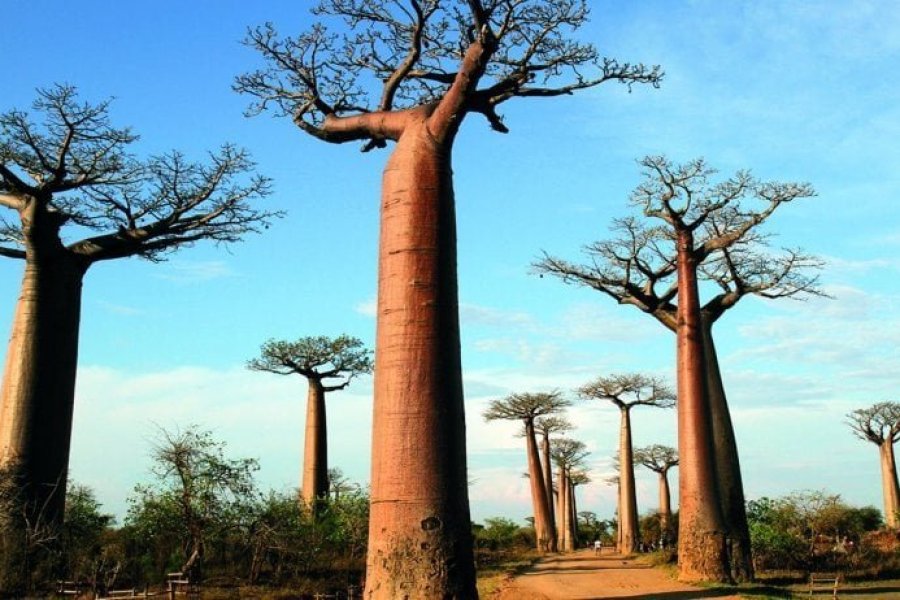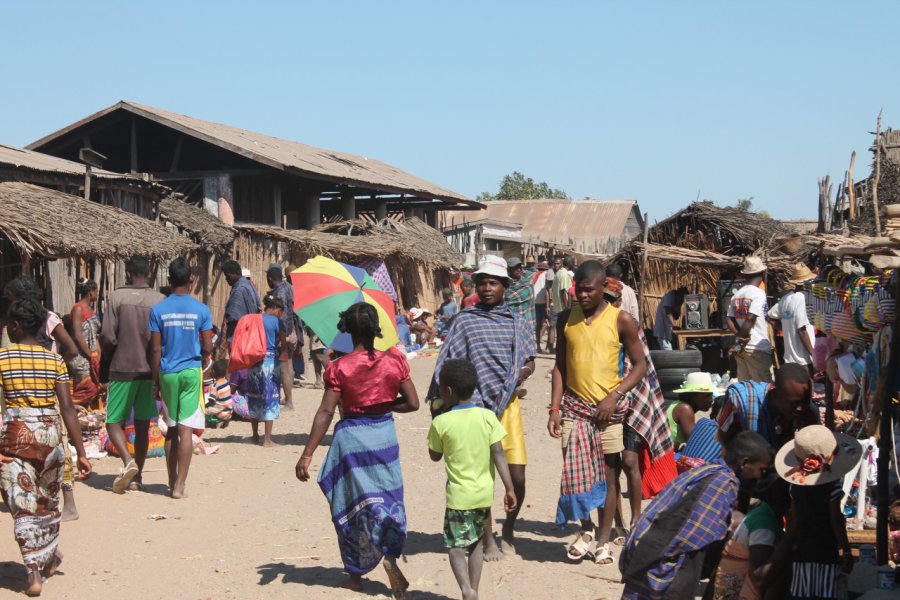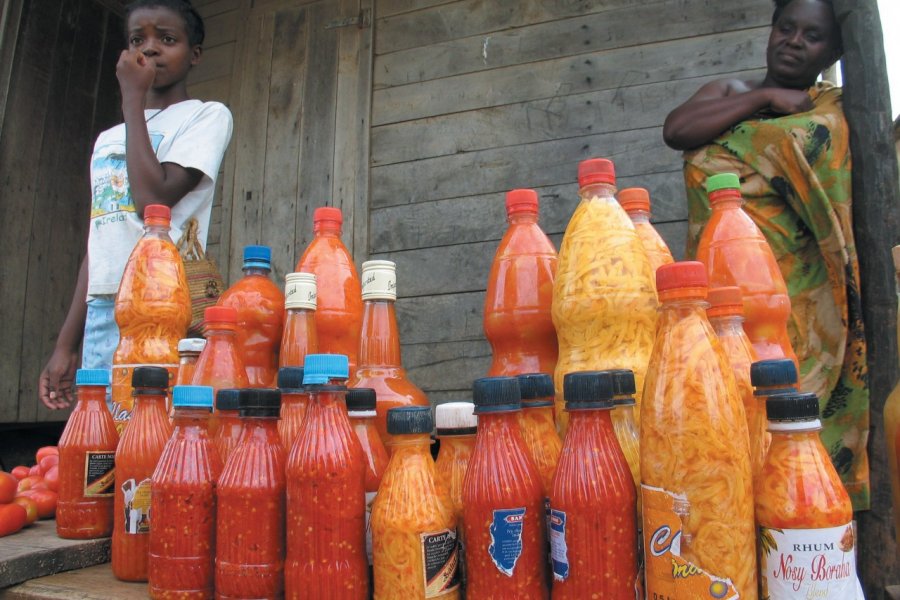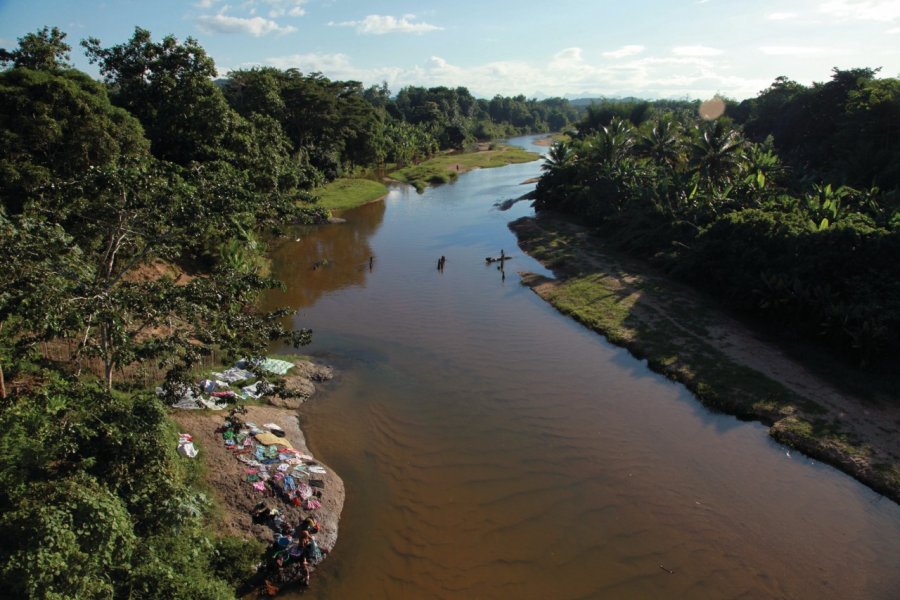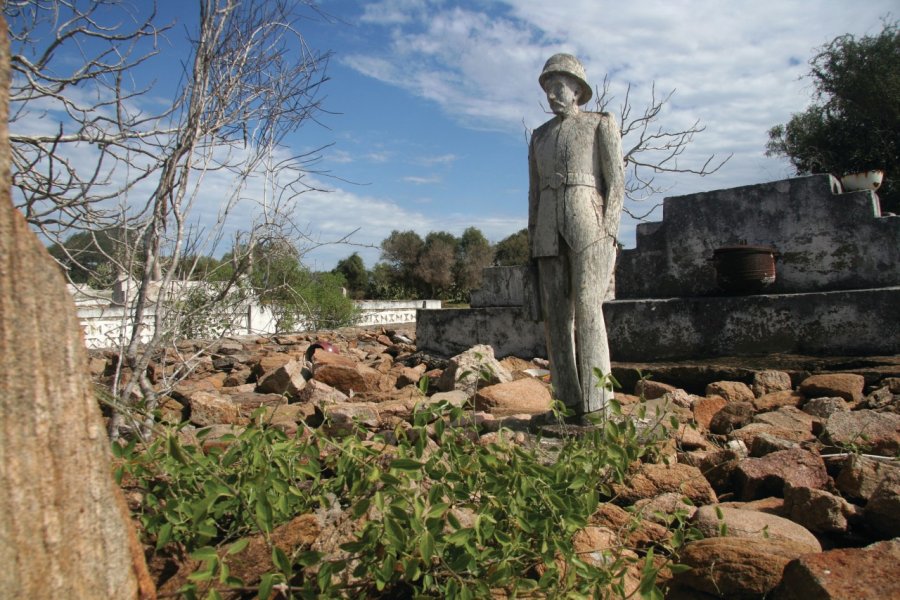Travel guide Madagascar
From the great arid spaces of the south to the tropical forests of the north, Madagasikara as it is called here, offers an infinite palette of colors and adventures. Eighteen culturally very different peoples populate this island as big as France and Belgium combined, revealing its history and its Asian, European and African influences. All of them share their communicative smiles, their appreciation of a life with a mora mora rhythm, and the importance of the present moment. And what a moment! In the back of a taxi-bike, on a zebu cart or gliding on the water in a pirogue, the red island will never cease to amaze you. Antananarivo or "Tana" the capital, is the heart of the country and the beginning of the journey. To the east, the tropical forests ofAndasibe are home to a multitude of chameleons and lemurs, including the Indri indri, the most imposing of all. In the west, the hundred-year-old baobabs and the Tsingy are the timeless symbols of what nature has to offer us of more beautiful. In the south, from Tulear to Fort Dauphin, vegetation is scarce and life becomes more harsh, only the nomadic fishermen and the Antandroy villages have been able to adapt to the extreme conditions, while in the north, the indolent Diego takes advantage of an intense heat to dress in orange and red colors that compete with the blue of the ocean. On both sides of the Big Island, paradise islands such as Sainte-Marie and Nosy Be are timeless escapades where you can meet many whales and whale sharks that bask there several months a year.
What to see, what to do Madagascar?
-
Book an activity
-
Customized travel
- The most beautiful cities Madagascar
When to go Madagascar ?
With pleasant temperatures all year round, Madagascar can be visited 365 days a year.
July and August are the peak tourist season. Airlines are very busy and fares are higher. If you are traveling at this time of year, it is advisable to book your round-trip flight as well as your domestic flights as soon as possible. For accommodation, even though there are unfortunately no crowds these days, a reservation by e-mail or telephone is preferable if you want to leave with peace of mind. The month of October, the first two weeks of November (other clientele), the end-of-year vacations and the Easter vacations constitute the other pole of the tourist season.
The slow periods are in February and from the end of May to the beginning of July. In January, February and March, many travel agencies take the opportunity to revise their equipment and some hoteliers close.
The off-season. The months of April, May, September, October and November are sought after, as this is the dry season, and airfares correspond to the low season.
Suggested addresses Madagascar
Travel Madagascar
-
Find a hotel
-
Car Rental
-
-5% on travel insurance-15% off travel insurance
-
Find a local agency
Madagascar is the size of France and Benelux combined, however its road network is so deteriorated that distances are sometimes (often) misleading. Here we have put together some of the many ideas for trips to Madagascar. The best thing would be to be able to stay for a long time on the Big Island - given the 11 or 12 hours flight time from Europe, let's dream that travelers could spend at least 3 weeks there, if not 4 or 5... or that they could come several times! Whatever your choice or your possibilities, the following ideas of stays are to be personalized and adapted to the desires of each one, and why not to combine them. Don't hesitate to talk about it with the agency you will undoubtedly leave with, or to take the time to study the following pages to offer you a unique trip... Madagascar is worth it!
Find unique Stay Offers with our Partners
How to go Madagascar
How to go alone
The adventurer will be able to travel alone by taxi-brousse on most of the island. The trips are however very long, bumpy and in a total promiscuity. They are however the perfect opportunity to make beautiful meetings and to observe the daily life of the Malagasy. It is however advised for certain zones to have recourse to a car with driver for reasons of safety or practicability of the road. Always report your movements.
How to go on a tour
Many travelers propose excursions in Madagascar, either thematic (hiking, river descents, animals, culture) or by geographical zones (Tana and its surroundings, Diego and the northern tip, from Tana to Tulear by the RN7). Impossible to see everything in one time, unless you stay 6 months, and then again.
How to get around
Globally, all trips are possible in Madagascar, you just have to be patient. The Malagasy roads being poorly maintained, dangerous and the signage non-existent, very few agencies will accept to rent you a car without a driver. Often your driver will also be your guide and will allow a real exchange with the inhabitants. This is the most popular way to travel in the country. Luxury" bush cabs are available throughout the country and are a good compromise between time and cost.
Featured articles Madagascar
Discover Madagascar
Madagascar is a unique country, an unprecedented encounter between Asia and Africa. In many ways, a discovery of the Big Island amazes, questions, and also calls into question. Mada never leaves you indifferent. The following files are an invitation to dive into the journey before the trip. From the superb Route Nationale 7, the first tourist road of the country to the great thematic files, on geography, nature, history, climate, population, religion or current issues..., it is a real snapshot of Madagascar that is proposed here. A way to give you the first keys of your trip, the first subtitles of your immersion in the original language. The Big Island is getting ready to reveal some of its thousand and one faces, and one thing is sure, you will only want to get to know it better and without any doubt come back and come back again!
Pictures and images Madagascar
The 12 keywords Madagascar
1. Whales

The humpback whales sail along the Malagasy coast from July to October. Sainte-Marie is the most popular destination to observe these cetaceans, but it is possible to admire them almost everywhere: in Nosy Be, Tuléar, Fort Dauphin, Sambava... The whale shark, the largest fish in the world, is present in Madagascar during the last three months of the year.
2. Deforestation
A real drama is taking place: about 200,000 hectares of forest are lost per year. If nothing is done to stop this massive cutting, the majority of the tropical forest will have disappeared by 2040. Madagascar could become a red desert. NGOs are trying to politicize the debate, but the fight is arduous and the prospects are not very encouraging.
3. God
The religious spirit of the Malagasy is difficult to approach for a Cartesian mind. The people of the Big Island believe in an all-powerful God, creator of the world, who bears the name of Zanahary on the coasts, Andrianahary (Lord creator) or Andriamanitra (perfumed Lord) in the interior. The Divine seems to be little concerned by the affairs of men.
4. Fady
Fady means what is taboo, sacred or illegal, what one cannot do, what one cannot say, what one cannot eat. These codes that regulate Malagasy social life, both material and spiritual, are still followed today. The fady were once innumerable, and, if they are partly abandoned, many of them remain.
5. Markets
The colorful markets are held in the heart of the cities, usually in the morning, before the heat is unbearable. In the biggest cities of the island, the market day is either Tuesday or Thursday. The Malagasy economy being still a subsistence economy, everyone sells his production and is ready to negotiate with the customer.
6. Crossbreeding
Madagascar is a striking example of crossbreeding: Asian smile, cinnamon or darker eyes, African nose, European bearing, Indian elegance, fine or frizzy hair... The Malagasy have an astonishing singularity, born of a plurality of origins. The Big Island is a baroque and colorful country, which evokes the five continents in one country.
7. Poverty
In spite of rich natural resources, Mada has one of the highest poverty rates in the world, we are talking about extreme poverty. If the encounters you will make will always be rich, this dramatic fact must remain in your mind: 81% of the population lives under the poverty line... and thus many of your interlocutors too!
8. Precious stones

The Malagasy soil fascinates geologists and lovers of minerals and precious stones. The craze for sapphire, for example, explains the sudden rise of "mushroom cities" in the middle of the desert. But sapphire is not everything: Mada is rich in emerald, ruby, garnet, seaweed, tourmaline, amethyst, citrine... and even green diamonds!
9. Post-colonization
Mada was colonized by the French for nearly 70 years. In the 1970s, a Malagachization of society took place. The governments of the 1980s and 1990s had to open the country up to foreign influences again. A perverse neo-colonialism infiltrates everywhere in society, even in tourism. Let's remain conscious.
10. Rice

Mada is the country in the world where the inhabitants ingest the most rice per year (between 130 and 150 kg per inhabitant). A Malagasy eats rice three times a day: it is not only consumed at three meals, including breakfast, but the cooking water is also drunk. Even if the cuisine differs in each region, it is always based on rice.
11. Taxi-brousse

Essential transport in Mada, bush cabs, often minibuses, travel the roads of the country, whatever their condition... Often equipped with 12 to 15 seats, they welcome 20 to 30 passengers. Tetris" atmosphere, and almost the equivalent of the weight is attached on the roof. It rocks, it shakes: an experience reserved for the most adventurous!
12. Zebu
Omnipresent in Mada, the zebu is the source of all wealth. Characterized by a big fat hump on the withers and long majestic horns, it is at the same time a working tool when it is in the fields, a means of transport when it is accompanied by a cart, a savings account and the promise of a delicious meal!
You are from here, if...
You keep your patience in all circumstances. Malagasy people are hospitable by nature, and the mora mora (quiet!) attitude is raised to an art of living. Keep to yourself any sign of impatience, which will not solve anything.
You know how to greet in different languages. One does not greet in the same way in Tana as in Fort Dauphin. In the Central Highlands, we say "Manao ahoana"; in Sakalava country, "Salama"; in Nosy Be, "M'Bola Tsara"; in the South, "Akory Anareo"; in the East, "Akory Lahaly"; and in the Southern Highlands, in Betsileo country, "Tsara Madyna"
You respect the local fady... Talk about it with your guides and contacts on the spot, they vary from one region to another.
You never point at anyone( respectedfady if ever there was one!). To point to something with the hand, Malagasy people put their middle finger curled up in their closed fist. Pointing the finger in any direction could mean that one is pointing at an invisible spirit..

